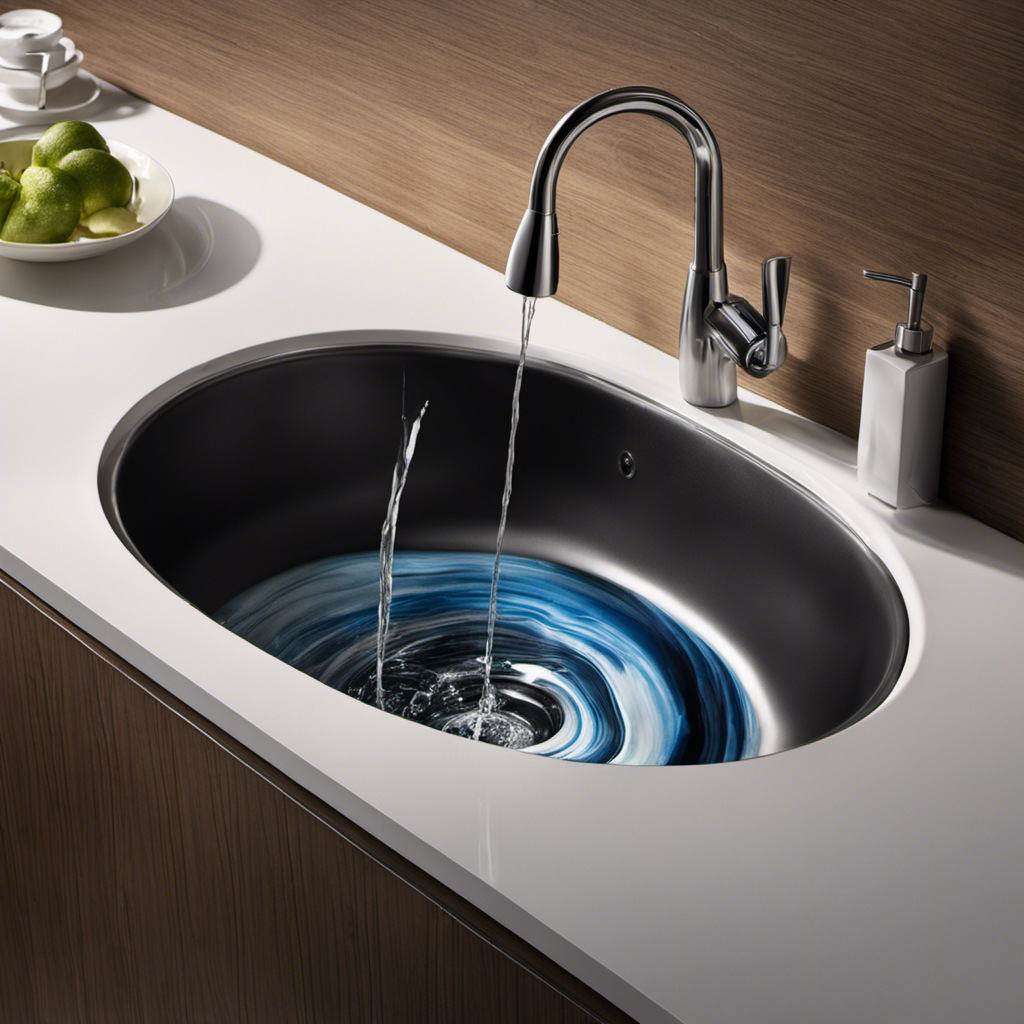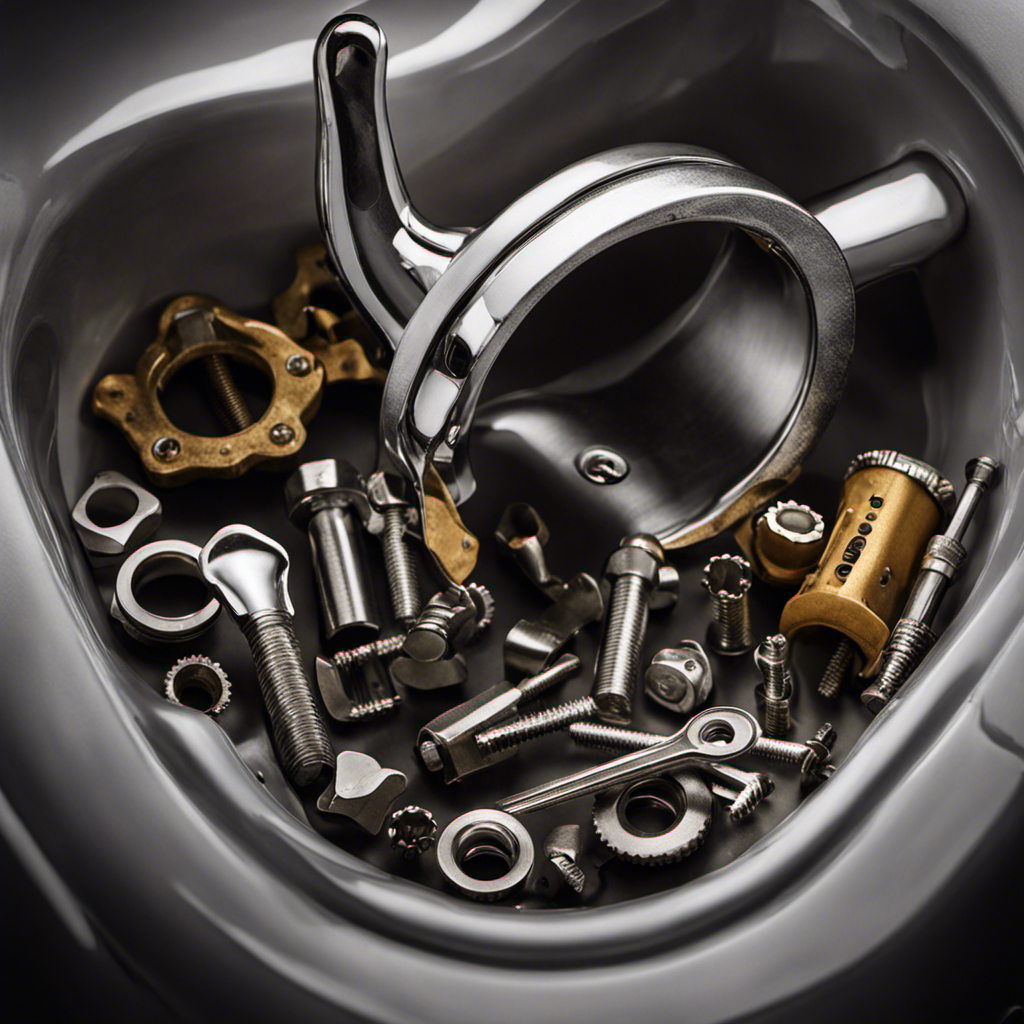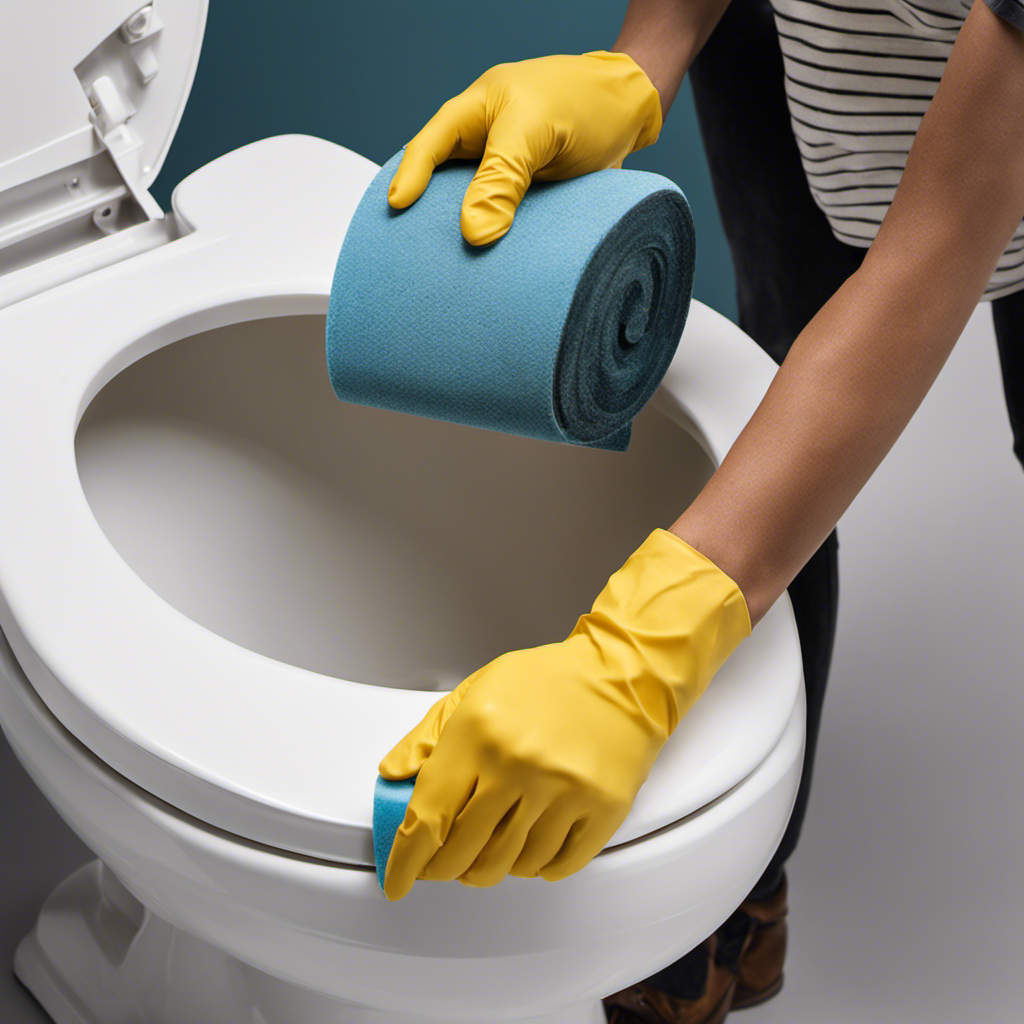Did you know that a loose toilet is a common household problem that can lead to leaks and water damage if not fixed promptly?
Well, fear not! I’m here to guide you through the process of fixing a loose toilet. With just a few simple tools and some easy-to-follow steps, you’ll have your toilet securely tightened in no time.
So, let’s roll up our sleeves and get started on this DIY project!
Key Takeaways
- Worn-out or damaged bolts and loose or corroded bolts are common causes of a loose toilet.
- To fix a loose toilet, you will need toilet repair kits, a wrench, a screwdriver, and a plunger.
- The steps for tightening a loose toilet include turning off the water supply, using a wrench to tighten the bolts at the base, ensuring the bolts are secure, and checking for leaks after turning the water supply back on.
- To prevent a toilet from becoming loose, use a level during installation, regularly tighten bolts, inspect the wax ring for wear or damage, and address leaks promptly.
Common Causes of a Loose Toilet
One of the most common causes of a loose toilet is worn-out or damaged bolts. Over time, the bolts that hold the toilet to the floor can become loose or corroded, causing the toilet to wobble or move when you sit on it.
Signs of a loose toilet include rocking or shifting when pressure is applied, a leaking wax ring, or a gap between the toilet base and the floor.
To fix a loose toilet, there are several possible solutions. One option is to tighten the bolts using a wrench. Another solution is to replace the bolts and washers with new ones. Additionally, you can use a toilet shim to stabilize the toilet and prevent it from moving.
Transitioning into the next section, let’s take a look at the tools you’ll need for fixing a loose toilet.
Tools You’ll Need for Fixing a Loose Toilet
To fix the problem with your toilet, you’ll need a few tools. Here’s a list of the essential tools for fixing a loose toilet:
| Tools | Description |
|---|---|
| Toilet repair kits | These kits contain all the necessary components for repairing a loose toilet, including bolts, washers, and gaskets. |
| Wrench | A wrench is used to tighten or loosen bolts and nuts. It is essential for adjusting the toilet bolts and securing the toilet to the floor. |
| Screwdriver | A screwdriver is needed to remove the screws that hold the toilet in place. It is also useful for other minor adjustments. |
| Plunger | While not necessary for every repair, a plunger can come in handy for clearing any clogs or blockages in the toilet. |
With these tools at hand, you’ll be ready to tackle the task of tightening your loose toilet. Now, let’s move on to the step-by-step guide to tightening a loose toilet.
Step-by-Step Guide to Tightening a Loose Toilet
Now, let’s start by grabbing your wrench and locating the bolts that secure the toilet to the floor. Proper toilet installation is essential for a sturdy and secure toilet.
Over time, the bolts may become loose due to regular use and vibration. It’s important to address this issue promptly to prevent further damage.
To tighten a loose toilet, begin by turning off the water supply and flushing the toilet to empty the tank. Then, use the wrench to tighten the bolts located at the base of the toilet, ensuring they are secure.
Once tightened, turn the water supply back on and check for any leaks. Regular maintenance, including checking and tightening the bolts periodically, will help prevent a toilet from becoming loose in the future.
Tips for Preventing a Toilet From Becoming Loose
Proper installation and routine maintenance are key factors in ensuring a toilet remains secure and stable over time. By following these tips, you can prevent your toilet from becoming loose and avoid potential issues in the future:
| Tip | Explanation |
|---|---|
| Use a level during installation | Ensuring that your toilet is level from the start will help prevent it from becoming loose over time. |
| Tighten the bolts regularly | Regularly check and tighten the bolts that secure the toilet to the floor. This will help maintain its stability. |
| Inspect the wax ring | The wax ring creates a watertight seal between the toilet and the floor. Regularly inspect it for any signs of wear or damage. |
| Avoid excessive force | When using the toilet, avoid excessive force or pressure that could cause the toilet to become loose. |
| Address leaks promptly | Any water leakage around the toilet base should be addressed promptly to prevent damage to the floor and potential loosening of the toilet. |
When to Call a Professional for a Loose Toilet
If your toilet is not staying securely in place, it may be time to consider calling a professional for assistance. Signs of a damaged toilet flange include a wobbly or rocking toilet, water leaks around the base, and difficulty flushing.
Regular toilet maintenance is important to prevent these issues and to ensure the proper functioning of your toilet. Over time, the toilet flange can become damaged or weakened due to age, wear and tear, or improper installation. Regular inspection and maintenance, such as tightening the bolts and checking for any signs of damage, can help identify and address any problems before they worsen.
However, if you notice any signs of a damaged toilet flange, it is best to seek professional help to properly repair or replace the flange and ensure the stability and functionality of your toilet.
Conclusion
After investigating the common causes of a loose toilet and learning how to fix it myself, I can confidently say that it’s a simple and manageable task.
By following the step-by-step guide and using the necessary tools, I was able to tighten the toilet securely in place.
Additionally, I learned some valuable tips on preventing a toilet from becoming loose in the future.
However, if you’re unsure or uncomfortable with DIY repairs, it’s always wise to call a professional for assistance.










